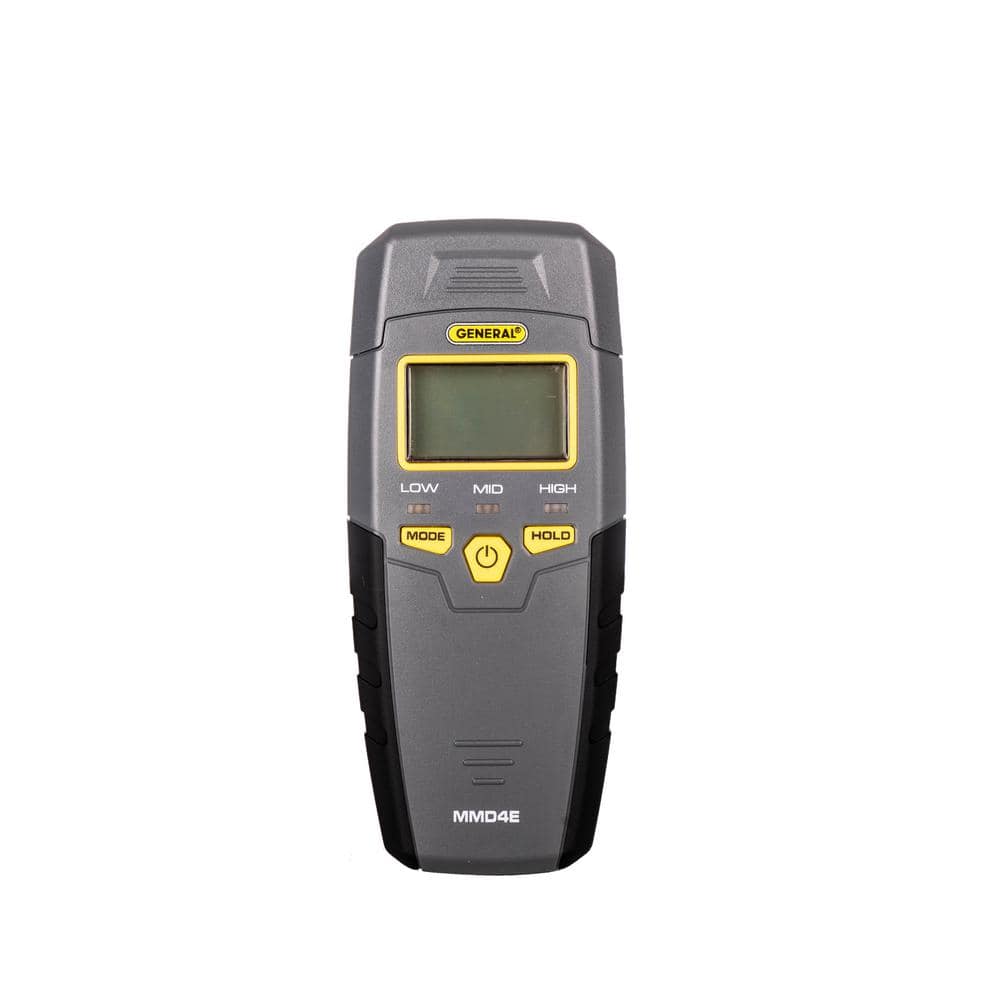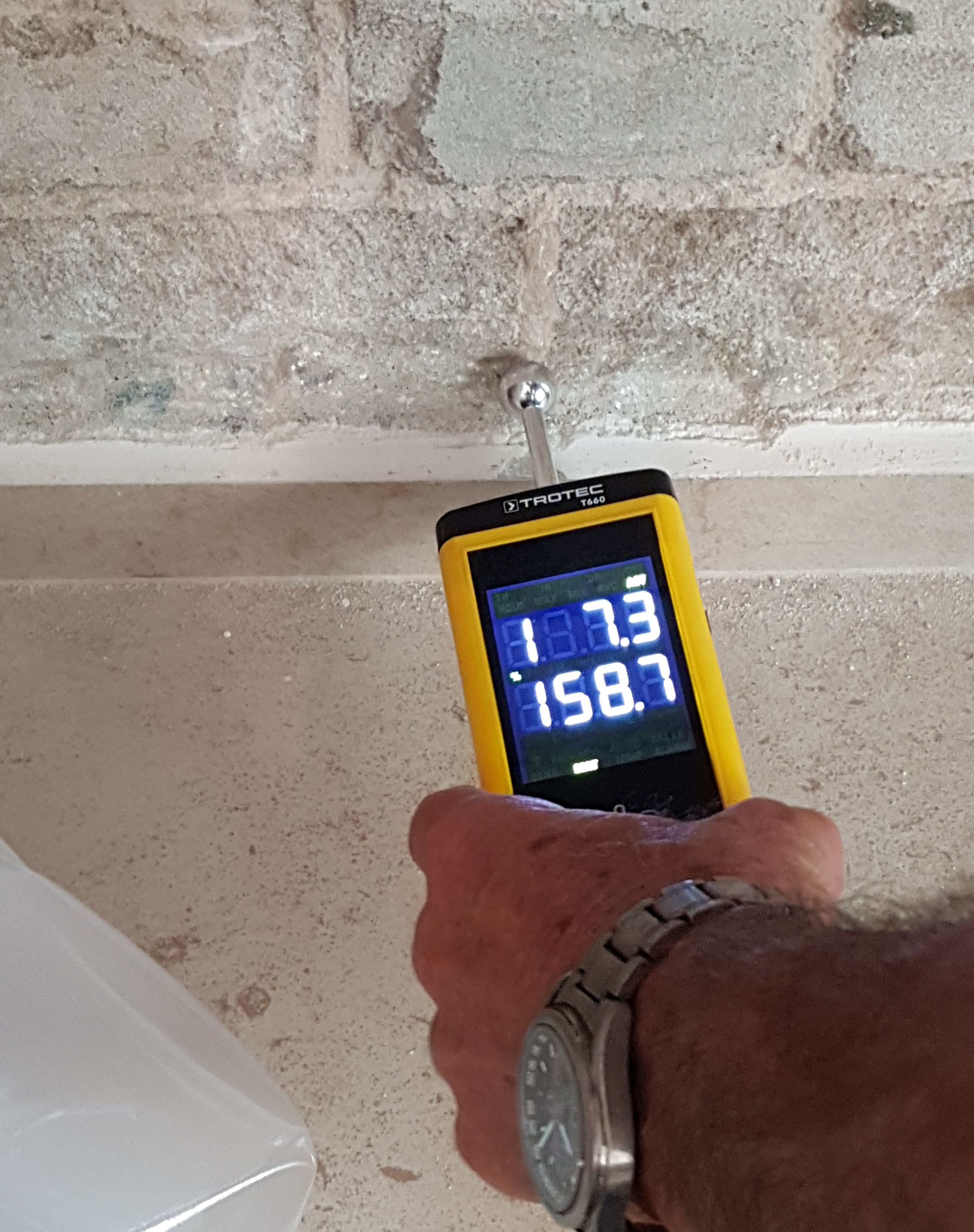Why Every Homeowner Needs a Moisture Meter: Key Benefits and Functions
Why Every Homeowner Needs a Moisture Meter: Key Benefits and Functions
Blog Article
Delve Into the World of Wetness Meters: Whatever You Need to Know
In the world of dampness meters exists a globe of accuracy and usefulness that often goes unnoticed. These devices, while relatively simple, hold a riches of details that can considerably influence numerous industries and applications. Recognizing exactly how moisture meters operate, the different types offered, and their diverse uses can shed light on their importance in guaranteeing quality and efficiency. By checking out the complexities of dampness meters, one can discover a valuable device that goes beyond simple measurement, offering understandings that can make a significant distinction in various areas.
Just How Moisture Meters Job
Wetness meters run by determining the electrical conductivity or capacitance of products to identify the dampness web content present - Moisture Meter. These meters are very useful devices throughout different markets, consisting of farming, woodworking, and building. By utilizing different approaches such as pin-type or pinless innovation, dampness meters provide precise analyses that help experts make educated choices
Pin-type wetness meters function by putting the sharp pins right into the product being tested. On the other hand, pinless moisture meters utilize electromagnetic signals to scan a larger area without causing any type of damage to the material's surface.
Despite the approach made use of, dampness meters play a crucial role in stopping concerns such as mold and mildew development, architectural damage, or product problems triggered by excess wetness. Comprehending how these meters work is vital for making sure the top quality and integrity of products in numerous applications.
Kinds Of Dampness Meters
Given the critical duty dampness meters play in different industries, it is essential to recognize the various types readily available to professionals for properly evaluating dampness levels. There are primarily 2 main sorts of moisture meters: pinless and pin-type moisture meters.
Pin-type dampness meters utilize 2 pins that are inserted right into the material being checked to measure the electric resistance between them. This technique is commonly utilized for timber, drywall, and other structure materials. Pin-type meters supply precise readings at details depths, making them excellent for determining dampness gradients.
On the various other hand, pinless moisture meters utilize electro-magnetic sensor plates to check a bigger location of the material without causing any type of damages. This type is ideal for swiftly scanning huge areas and is frequently used for floor covering, walls, and ceilings. Pinless meters are convenient for taking analyses on finished surface areas without leaving any type of noticeable marks.
Both kinds of moisture meters have their benefits and are chosen based on the certain requirements of the job available. Recognizing the distinctions between these types is critical for professionals to make accurate wetness evaluations.
Applications Throughout Industries
With varied functionalities, moisture meters find extensive application throughout different sectors, assisting specialists in guaranteeing ideal problems for frameworks and products. In the farming field, moisture meters are indispensable for figuring out the dampness web content in grains, seeds, and hay, making certain top quality control and protecting against mold and mildew development. Construction professionals count on moisture meters to assess you can check here the moisture levels in building materials like drywall, timber, and concrete, which is vital for keeping architectural stability and stopping problems like rot or mold and mildew. The floor covering sector makes use of dampness meters to gauge the dampness material in subfloors before installing various floor treatments, protecting against pricey damages due to excess moisture. In the food industry, moisture meters are made use of to keep an eye on and manage moisture degrees in items such as grains, nuts, and dried out fruits to preserve freshness and quality. Additionally, dampness meters play a crucial function in the reconstruction and damage assessment market by helping specialists determine and address water damages in buildings immediately. Across these varied industries, wetness meters are essential devices for guaranteeing the top quality, safety, and long life of various products and items.
Tips for Using Moisture Meters
Use the dampness meter's calibration setups to ensure precise readings when determining the wetness web content in various materials. Calibration is essential for the correct performance of a dampness meter. Prior to each use, it is recommended to inspect and readjust the calibration settings according to the certain product being tested. Additionally, ensure the meter is set to the proper dampness array for the product you are determining to acquire the most accurate results.

When utilizing a pin-type dampness meter, put the pins to the ideal deepness advised for the product being checked. This makes sure that the wetness analyses are drawn from the right deepness within the product, supplying a much more accurate representation of its moisture web content. For pinless dampness meters, keep in mind to preserve appropriate call with the material's surface to get dependable readings.

Consistently inspect and replace the batteries in your moisture meter to stop imprecise readings due to reduced power. When not in usage to extend its lifespan and maintain its precision, Store the meter in a secure and dry area. By following these pointers, you can optimize the performance of your wetness meter and get precise wetness web content click this site measurements throughout various materials.

Upkeep and Calibration
To make certain the accuracy of dampness material dimensions, routine upkeep and calibration of the wetness meter are essential actions in its proper performance. Upkeep includes maintaining the wetness meter complimentary and clean from particles that might affect its readings. It is necessary to adhere to the manufacturer's standards for cleansing to stop damage to the device. In addition, regular calibration is needed to verify the accuracy of the analyses. Calibration readjusts the moisture meter to make sure that it provides dependable and regular outcomes.
Calibration must be done regularly, especially if the moisture meter is used often or in vital applications where accurate measurements are needed. By keeping and adjusting the dampness meter consistently, customers can trust the precision of the wetness web content dimensions acquired.
Final Thought
In Related Site final thought, moisture meters play a vital function in various industries by accurately gauging the dampness material of materials. Comprehending how these gadgets work, the different kinds offered, and correct upkeep and calibration are crucial for getting trustworthy results. Whether in manufacturing, building and construction, or agriculture, using moisture meters aids ensure high quality control and efficiency in procedures.
Building specialists depend on dampness meters to evaluate the dampness degrees in building products like timber, concrete, and drywall, which is critical for preserving architectural honesty and avoiding concerns like rot or mold. The flooring market makes use of moisture meters to determine the dampness content in subfloors before mounting numerous floor coverings, stopping pricey damages due to excess moisture.Use the moisture meter's calibration settings to make sure precise analyses when gauging the dampness content in various materials. By following these suggestions, you can make the most of the performance of your wetness meter and acquire exact wetness material dimensions throughout different materials.
In final thought, wetness meters play a vital duty in numerous sectors by properly gauging the wetness material of products.
Report this page